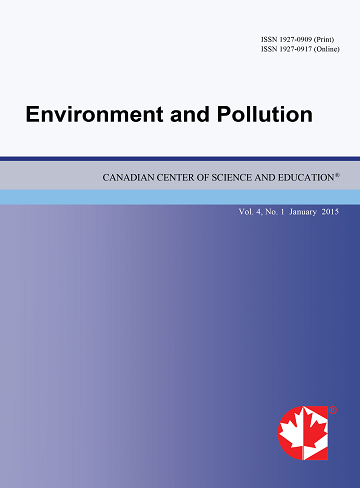Perceived Health Hazards of Low-Quality Irrigation Water in Vegetable Production in Morogoro, Tanzania
- Winfrida Mayilla
- Flavianus Magayane
- Bernard Keraita
- Helena Ngowi
Abstract
This study assessed the perceptions of vegetable farmers, traders, consumers and key informants on the health hazards of using low-quality water in irrigation vegetable production in Morogoro, Tanzania. Methods used to collect data were a survey involving all farmers in Changarawe village and Fungafunga area using low-quality water for irrigation vegetable production (n=60), consumers of low-quality water irrigated vegetables (n=70) and vegetable traders selling low-quality water irrigated vegetables (n=60), focus group discussions (n=7) and key informant interviews (n=25). The study employed cross sectional research design. Descriptive statistics were used to calculate mean, frequencies and percentages while Mann-Whitney U-test and Kruskal-Wallis H-test assessed the association between social-demographic variables and respondents score on the health hazard perception scale of using low-quality water in vegetable production. Results showed skin itching, fungal diseases, bilharzias and worm infestation as among the perceived health hazards in using low-quality irrigation water. Health hazard perception differed among groups of farmers, consumers and vegetable traders (p<0.001). The mean ranks of the groups indicated that farmers perceive less health hazards in using low-quality water (mean rank = 147.98) compared to consumers (mean rank = 72.68) and vegetable traders (mean rank 69.64). More health hazards were perceived by Fungafunga farmers compared to farmers from the Changarawe village (p<0.001) while female farmers perceived less hazards in using low-quality water than male farmers (p < 0.05). Consumers with formal education perceived more health hazards than consumers with no formal education (p < 0.001) while vegetable traders from Fungafunga area perceived more health hazards in selling low-quality water irrigated vegetable than vegetable traders from the Changarawe village (p<0.001). These findings demonstrate the need to design health hazards minimization interventions for specific target group.
- Full Text:
 PDF
PDF
- DOI:10.5539/ep.v5n1p1
Journal Metrics
Index
- Academic Journals Database
- Berkeley Library
- CAB Abstracts
- CAS (American Chemical Society)
- CNKI Scholar
- COPAC
- CrossRef
- DTU Library
- Elektronische Zeitschriftenbibliothek (EZB)
- EuroPub Database
- Excellence in Research for Australia (ERA)
- Genamics JournalSeek
- Google Scholar
- Harvard Library
- Infotrieve
- Jisc Library Hub Discover
- JournalGuide
- JournalTOCs
- LOCKSS
- Max Planck Institutes
- Mir@bel
- PKP Open Archives Harvester
- Pollution Abstracts
- Publons
- Pubmed journal list
- ROAD
- Scilit
- SHERPA/RoMEO
- Standard Periodical Directory
- Stanford Libraries
- UCR Library
- Ulrich's
- UniCat
- Universe Digital Library
- UoS Library
- WorldCat
- Zeitschriften Daten Bank (ZDB)
Contact
- Albert JohnEditorial Assistant
- ep@ccsenet.org
